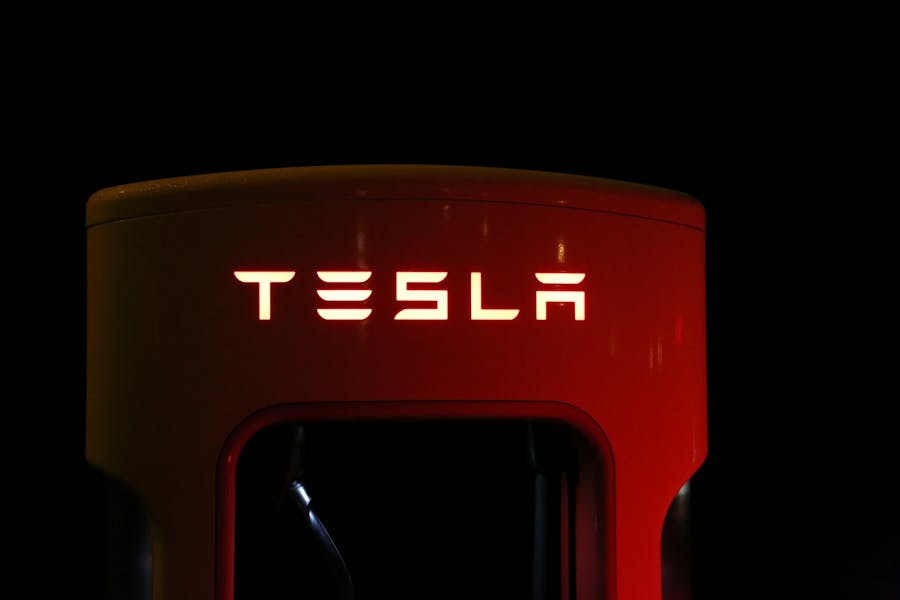Two companies in the rapidly evolving electric vehicle (EV) market stand out for their innovative approaches and ambitious visions: Tesla and Rivian. Tesla, led by the enigmatic Elon Musk, has been a trailblazer, revolutionizing car manufacturing and how people think about transportation. On the other hand, Rivian, a newer and smaller player, has carved out its niche by focusing on adventure-oriented electric trucks and SUVs, attracting attention with its forward-thinking design and technology. Comparing these two companies provides fascinating insights into different strategies within the same industry, reflecting broader trends and future possibilities in sustainable transportation.
Overview Of The Electric Vehicle (EV) Market
The electric vehicle (EV) market has witnessed exponential growth over the last decade, driven by increasing environmental concerns, advancements in battery technology, and supportive government policies promoting sustainable transportation. Initially dominated by smaller startups, the market has seen major legacy automakers pivot to EV production, signaling a significant shift in the automotive industry’s future.
EV sales have surged globally, with significant increases in major markets such as China, Europe, and the United States. This growth is spurred by a combination of factors, including the declining cost of batteries, improved EV infrastructure such as charging stations, and an expanding range of models that cater to various consumer needs. The International Energy Agency (IEA) reports that EVs could make up over half of all passenger car sales by 2040, underscoring the sector’s pivotal role in reducing carbon emissions.
Battery technology has been a critical development area, with improvements in energy density and charging speed enhancing the appeal of EVs. Solid-state batteries, which promise even greater efficiency and safety, are on the horizon. Additionally, integrating renewable energy sources with EV charging infrastructure is becoming more common, further reducing the carbon footprint of electric driving.
Governments worldwide have introduced various incentives to accelerate the adoption of EVs. These include tax rebates, grants, subsidies, non-monetary benefits such as access to carpool lanes, and exemptions from certain fees. Policy initiatives also target the expansion of charging infrastructure and mandates for automakers to produce more eco-friendly vehicles.
Despite the positive trends, the EV market faces challenges, including supply chain disruptions, particularly in the availability of critical minerals for batteries. The industry also needs to address concerns related to the environmental impact of battery production and disposal, the ethical sourcing of materials, and ensuring that the benefits of EVs are accessible to a broad spectrum of the population.
The future of the EV market looks promising but requires continued innovation and collaboration among automakers, governments, and other stakeholders to overcome existing hurdles. As technology advances and the cost of owning and operating EVs continues to decrease, these vehicles are expected to become increasingly commonplace, representing a critical component of global efforts to promote sustainable transportation and combat climate change.
What Are The Backgrounds Of Tesla And Rivian?
Tesla Background
Founding and History: Tesla, Inc. was founded in 2003 by Martin Eberhard and Marc Tarpenning. However, it is most famously associated with Elon Musk, who joined the company early as a significant investor and later became its CEO and public face. Tesla was established to accelerate the world’s transition to sustainable energy. It first gained attention with the introduction of the Tesla Roadster in 2008, the first fully electric sports car, which demonstrated that EVs could compete with traditional gasoline engines in terms of performance.
Elon Musk’s Role and Vision: Elon Musk’s involvement has been pivotal. Under his leadership, Tesla has expanded its product line to include more accessible models like the Model 3 and Model Y, significantly broadening its market. Musk’s vision extends beyond electric cars; Tesla also invests in battery production, solar energy products, and technology for autonomous vehicles. His goal is to make Tesla a vertically integrated clean energy company.
Current Position in the EV Market: Today, Tesla is a dominant force in the global EV market. It has set standards not only in terms of technology and innovation but also in manufacturing practices with its Gigafactories, which are designed to scale up production and reduce battery costs massively. Tesla’s market capitalization has, at times, made it the most valuable car company in the world, reflecting its impact on the industry and investor expectations for its future growth.
Rivian Background
Founding and History: Rivian was founded in 2009 by RJ Scaringe, initially focusing on building an electric sports car before pivoting to electric trucks and SUVs aimed at the outdoor adventure market. The company flew under the radar for many years, developing its technology and securing patents, until it revealed its first two models, the R1T pickup and the R1S SUV, in 2018.
Key Figures and Leadership: RJ Scaringe, Rivian’s CEO, has a Ph.D. in Mechanical Engineering and has guided the company with a clear focus on sustainability and innovation. Rivian has attracted significant investment from major players like Amazon and Ford, which has helped it scale up production and infrastructure. The company aims to combine utility, performance, and robustness in its vehicles, catering to a niche but growing segment of consumers interested in rugged, off-road, and versatile electric vehicles.
Niche Focus and Market Entry: Rivian targets a specific part of the EV market by focusing on adventure-ready vehicles, which sets it apart from Tesla’s broader consumer approach. Its trucks and SUVs are designed to be high-performing on and off-road, with features that appeal to outdoor enthusiasts, such as modular and versatile interiors and high water fording capabilities. Rivian’s approach to market entry has been about carving out this niche, offering products that blend environmental consciousness with a rugged, adventure-ready appeal.
Technology And Innovation In Tesla And Rivian
Tesla and Rivian are recognized for their innovative approaches in the electric vehicle (EV) industry, although their focuses and strategies differ significantly.
Tesla
Battery Technology
Tesla is at the forefront of battery technology, central to its innovation strategy. The company uses lithium-ion battery cells and has developed proprietary technology to enhance battery life, energy density, and safety. Tesla’s Battery Day presentations have highlighted advancements such as developing the “4680” cell, which promises more power and greater range with lower production costs. Tesla also integrates battery production with vehicle assembly to streamline manufacturing and reduce costs.
Autonomous Driving Capabilities
Tesla’s Autopilot and Full Self-Driving (FSD) capabilities are among the most advanced in the industry. These features use a combination of cameras, ultrasonic sensors, and radar to enable vehicle automation in steering, lane keeping, and speed control. Tesla continually updates its software through over-the-air updates, improving functionality and adding new features. Despite controversies and regulatory scrutiny, Tesla pushes the envelope on what autonomous technologies can achieve in consumer vehicles.
Software and User Interface
Tesla’s software ecosystem is highly integrated and user-focused. It offers an intuitive and rich interface that controls everything from navigation to climate control, often updated to enhance features and usability. Tesla’s vehicles also include an in-car entertainment system that supports streaming and gaming, underscoring the company’s focus on the user experience.
Rivian
Battery Technology
Rivian has developed its battery packs to be structurally integrated into the vehicle’s frame, which enhances safety and vehicle dynamics. The company uses a skateboard platform that allows for a flat, flexible cabin floor and maximizes storage space. Rivian’s battery system is designed to be robust against various weather conditions, particularly for off-road and adventure use, including high water resistance.
Autonomous Driving Capabilities
Rivian’s Driver+ system is the company’s approach to autonomous driving, which comes standard on its vehicles. It offers hands-free driving assistance on highways and is designed to automatically steer, adjust speed, and change lanes under certain conditions. While not as extensively marketed as Tesla’s Autopilot, Rivian’s system is being progressively updated to enhance its capabilities.
Software and User Interface
Rivian’s user interface is tailored to the needs of adventure-seekers. It features off-road navigation tools, vehicle diagnostics geared towards rugged use, and easy-to-use controls that can be managed even in tough driving conditions. The focus is less on luxury and more on functionality and durability, reflecting the brand’s outdoor-centric ethos.
Conclusion
Tesla and Rivian represent two distinct paths within the electric vehicle industry, each driven by a unique vision and approach to innovation. Tesla has established itself as a global EV market leader through cutting-edge technology, pioneering battery systems, and advanced autonomous driving features. It aims to make electric vehicles accessible and desirable to a global audience, integrating luxury with high performance. Rivian, on the other hand, focuses on a niche market by producing rugged, adventure-ready vehicles that combine sustainability with the versatility needed for off-road experiences. As both companies continue to evolve, their innovations will likely shape the future of electric transportation and the broader automotive industry, reflecting different consumer values and pushing the envelope in technology and design.





















